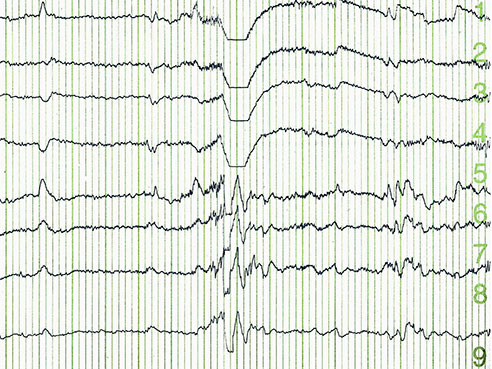
(This is not seen as a 'complication' by medical staff, because a seizure during an EEG can greatly help in diagnosis.) Taking care of yourself at homeĮEG is a safe procedure. However, a person with epilepsy may experience a seizure, triggered by the various stimuli used in the procedure, including the flashing lights. Complications of EEGĮEG is a safe test with no side effects. If excited, the pattern will show considerable variation, and any departure from the regular pattern can indicate abnormalities. Generally, if there is no abnormality to the brain's electrical activity, the pattern of 'peaks and valleys' charted by the EEG should be fairly regular. The results need to be analysed at a later stage by a neurologist (a doctor who specialises in brain disorders). Once the test is complete, the electrodes are removed and you are allowed to get up. Some EEG testing centres may record a video of your tests to help with diagnosis. Sedatives (medications to help sleep) may be needed if sleep won't come naturally during the test. If the patient is a baby or young child, it helps if the parents delay the child's nap until the time of the EEG. Sometimes, a sleep recording is also required. An EEG usually takes from 30 to 60 minutes to complete. Sometimes, you may be asked by the doctor to open and close your eyes and to breathe heavily. You will need to lie quietly to avoid any electrical interference from muscle contractions. A gel may be applied to help the electrodes to stick firmly in place and improve recordings. A number of electrodes are applied to your scalp (generally between 8 and 23, depending on the condition under investigation).


Your hair must be thoroughly clean, but most importantly dry. Sometimes, a person with epilepsy will only display abnormal brain waves during a seizure. On the other hand, a normal EEG doesn't rule out epilepsy either. The EEGs of babies and young children can often record irregular patterns that don't mean anything, or the irregularities may flag previously diagnosed neurological conditions such as cerebral palsy.

EEG can help diagnose a number of conditions, including epilepsy, sleep disorders and brain tumours. This procedure is completely painless and can be performed without shaving any of your hair. The electroencephalogram (EEG) is a medical test used to measure the electrical activity of the brain, via electrodes applied to your scalp.


 0 kommentar(er)
0 kommentar(er)
